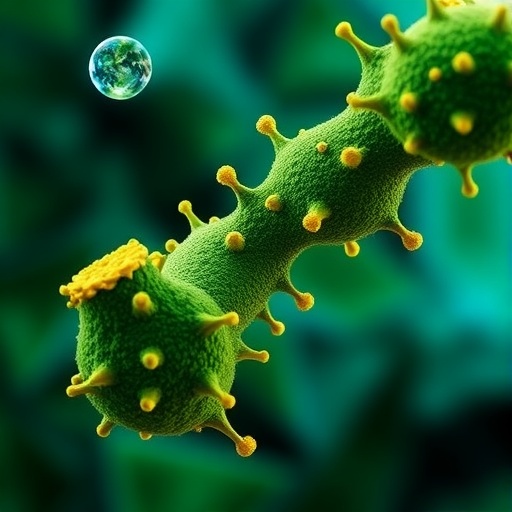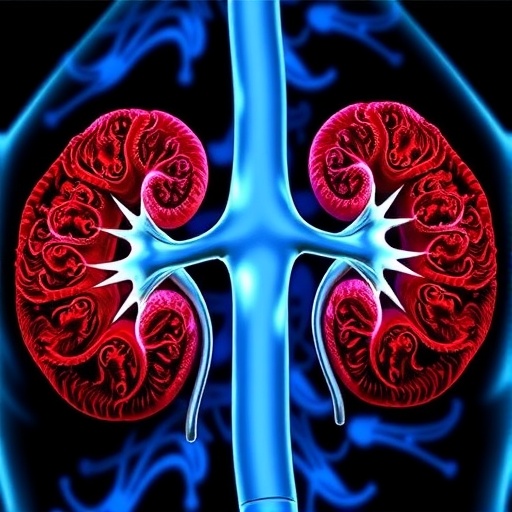The intricate relationship between mitochondrial function and Parkinson’s disease (PD) has garnered significant attention within the neuroscience community, especially as emerging evidence highlights how targeted interventions such as exercise can alter disease trajectories. Mitochondria, the cellular powerhouses responsible for ATP production through oxidative phosphorylation, also regulate apoptosis and maintain cellular metabolic homeostasis. Their dysfunction is increasingly recognized as a central pathological feature in PD, setting the stage for neurodegeneration in vulnerable dopaminergic neurons.
Mutations in key genes such as PINK1 and parkin reveal a shared molecular pathway focused on mitochondrial quality control and the initiation of mitophagy, the autophagic process responsible for clearing damaged mitochondria. Defects in these mechanisms lead to impaired electron transport chain (ETC) function, particularly in complex I, which culminates in heightened oxidative stress and compromised cellular energy metabolism. These disruptions not only contribute to neuronal death but also exacerbate the accumulation of pathological protein aggregates, a hallmark of PD.
Beyond PINK1 and parkin, DJ-1 emerges as another crucial player in cellular stress responses and antioxidant defense. Its role extends to modulating pathways involving the receptor for advanced glycation end products (RAGE) and Toll-like receptor (TLR) signaling, linking mitochondrial health to inflammatory and immune responses in the nervous system. Interestingly, environmental stimuli such as enriched exercise conditions have been shown to enhance DJ-1 expression, suggesting a molecular basis for exercise’s protective effects, both motor and cognitive, in PD.
.adsslot_ZPCTY4zAXd{ width:728px !important; height:90px !important; }
@media (max-width:1199px) { .adsslot_ZPCTY4zAXd{ width:468px !important; height:60px !important; } }
@media (max-width:767px) { .adsslot_ZPCTY4zAXd{ width:320px !important; height:50px !important; } }
ADVERTISEMENT
Exercise is increasingly recognized not just as a lifestyle choice but as a potent biological modulator capable of restoring mitochondrial function at multiple levels. Experimental and clinical studies have documented how physical activity promotes mitochondrial biogenesis—the generation of new mitochondria—while refining mitochondrial morphology and improving efficiency of the respiratory chain. These adaptations collectively bolster cellular bioenergetics, lower reactive oxygen species (ROS) levels, and mitigate oxidative damage, thereby safeguarding neurons from degeneration.
Importantly, the dopaminergic system—critically impaired in PD—is responsive to exercise-induced mitochondrial benefits. Beyond the traditionally studied α-synuclein monomers that aid ATP synthase function under normal conditions, pathological aggregation of α-synuclein within mitochondria disrupts energetic homeostasis by inducing oxidative modifications of ATP synthase and lipid peroxidation. This cascade precipitates mitochondrial swelling and permeability transition pore (PTP) opening, steps priming cells for apoptosis. Exercise intervenes in this deleterious pathway by preserving mitochondrial integrity and function, effectively curbing neurodegeneration.
Preclinical studies employing treadmill training paradigms have demonstrated remarkable improvements in mitochondrial health within both muscular and neural tissues. Upregulation of sirtuin family proteins SIRT1 and SIRT3 figures prominently in these effects. SIRT1, a NAD+-dependent deacetylase, drives mitochondrial biogenesis and promotes antioxidant defenses, while SIRT3 modulates mitochondrial respiratory capacity and fosters anti-aging pathways within dopaminergic neurons. Their coordinated elevation through exercise diminishes oxidative damage and fortifies neuronal resilience.
Further elucidating molecular underpinnings, treadmill-based interventions elevate levels of insulin-like growth factor 1 (IGF-1), vascular endothelial growth factor (VEGF), and regulators of the renin-angiotensin system in regions such as the substantia nigra. These molecular changes conspire to quell inflammation and oxidative stress, two pivotal drivers of dopaminergic neuron loss in PD. Notably, exercise enhances the mitochondrial import machinery by upregulating proteins such as TOM-40, TOM-20, and TIM-23, facilitating efficient protein translocation critical for mitochondrial function and biogenesis, and concurrently reduces α-synuclein expression.
The mitochondrial network’s integrity is also maintained through exercise-mediated modulation of apoptotic and autophagic pathways. Anti-apoptotic proteins including MCL-1 and BCL-2 are upregulated, counterbalancing pro-apoptotic factors such as apoptosis-inducing factor (AIF). Simultaneously, autophagy-related proteins see increased expression, collectively fostering cellular survival and homeostasis in a process significantly involving SIRT1 activity. This fine-tuned balance underscores the capacity of exercise to promote neuronal survival amidst mitochondrial stress.
Translating these molecular insights into clinical relevance, high-intensity exercise regimens in patients with moderate to advanced PD yield substantial motor improvements. These enhancements are not solely neurological; skeletal muscle adaptations including fiber hypertrophy and a shift towards more fatigue-resistant fiber types accompany increased mitochondrial function in muscle tissue. The augmentation of mitochondrial efficiency within sarcolemmal and myogenic regions likely contributes to the observed functional gains, highlighting exercise as a multi-system therapeutic modality.
The neuroprotective capacity of exercise extends to limiting α-synuclein aggregation, a crucial pathological event precipitating mitochondrial dysfunction and cell death. Recent evidence points to molecules such as irisin—an exercise-induced myokine—that confer protection by preventing mitochondrial damage. These findings position exercise not only as symptomatic treatment but as a disease-modifying strategy targeting core pathogenic mechanisms in PD.
Collectively, the growing body of research underscores mitochondrial dysfunction as a pivotal axis in PD pathogenesis and marks exercise as a promising intervention capable of restoring mitochondrial health. The modulation of sirtuin activity, mitochondrial biogenesis, oxidative stress, and apoptotic/autophagic balance illustrates the intricate molecular symphony orchestrated by physical activity. This orchestrative power of exercise holds promise in slowing, halting, or potentially reversing neurodegeneration in PD.
Future research stands to elucidate even deeper mechanistic insights into how different exercise modalities and intensities influence mitochondrial dynamics and neuroprotection in PD. Parsing out individual variability in response to exercise could optimize personalized intervention approaches. Moreover, investigating combinatory therapies that enhance exercise benefits by targeting mitochondrial pathways may further refine PD management strategies.
In an era where neurodegenerative diseases continue to impose substantial health burdens worldwide, integrating exercise science and mitochondrial biology reveals an actionable pathway to improve patient outcomes. The intricate, reciprocal relationship between physical activity and mitochondrial function offers a novel paradigm in understanding and combating Parkinson’s disease.
These transformative insights compel the scientific and clinical communities to advocate for exercise as a foundational component within PD therapeutics. Such interventions not only address cardinal motor deficits but also attend to the often-neglected non-motor symptoms through systemic enhancements in cellular energy metabolism and resistance to oxidative injury. As molecular mechanisms become clearer, exercise’s role as a neuroprotective agent gains indisputable clarity.
The emerging landscape of PD research increasingly champions a holistic understanding of mitochondrial health as critical to neuronal survival and function. Even as targeted pharmacological treatments evolve, the fundamental benefits of exercise on mitochondrial resilience remain unparalleled. This realization heralds a new frontier—one where lifestyle interventions and molecular medicine converge to redefine neurodegenerative disease treatment.
In conclusion, the compelling evidence connecting mitochondrial dysfunction to PD pathology and revealing exercise as a potent countermeasure should galvanize efforts toward widespread adoption of physical activity in at-risk and diagnosed populations. Harnessing the molecular power of exercise to restore mitochondrial homeostasis offers a beacon of hope in the quest to ameliorate, and potentially prevent, Parkinson’s disease progression.
Subject of Research: Molecular mechanisms underlying exercise-induced benefits in Parkinson’s disease
Article Title: New perspectives on molecular mechanisms underlying exercise-induced benefits in Parkinson’s disease
Article References:
Chen, X., Zhang, G., Liu, M. et al. New perspectives on molecular mechanisms underlying exercise-induced benefits in Parkinson’s disease. npj Parkinsons Dis. 11, 256 (2025). https://doi.org/10.1038/s41531-025-01113-w
Image Credits: AI Generated
Tags: cellular energy metabolism in neurodegenerationcomplex I electron transport chain dysfunctionDJ-1 role in antioxidant defenseexercise and Parkinson’s diseaseinflammatory responses in Parkinson’s diseasemitochondrial function in neurodegenerationmitophagy and mitochondrial quality controlmolecular pathways in Parkinson’s diseaseneuroprotective effects of exerciseoxidative stress in Parkinson’s diseasePINK1 parkin mutationstargeted interventions for Parkinson’s





